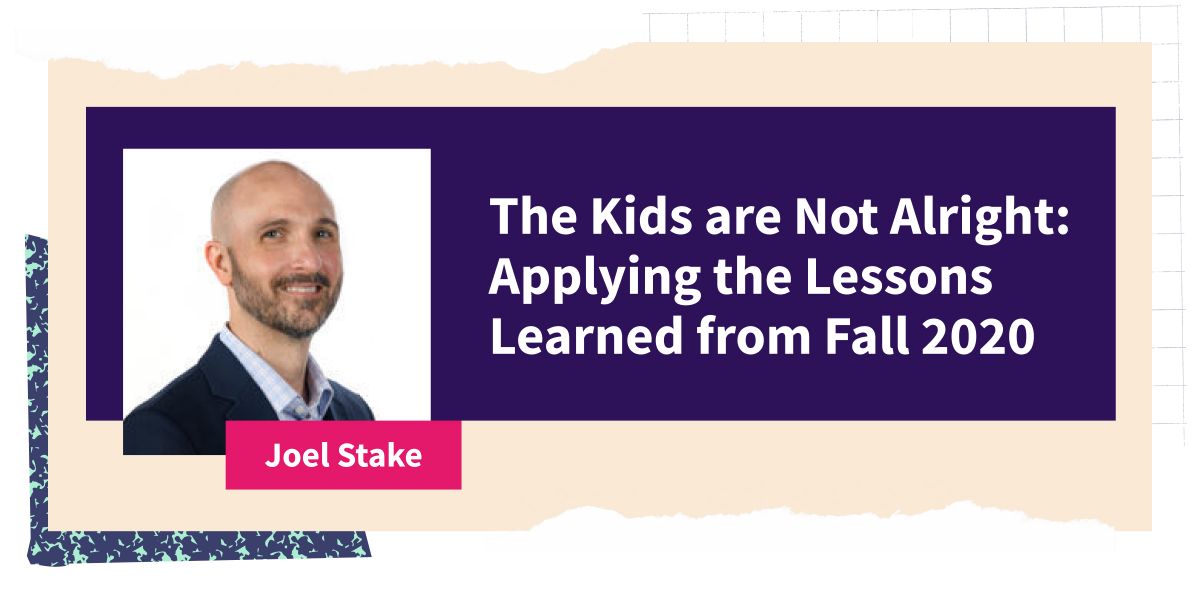Joel Stake is a Lecturer of Biological Sciences at Louisiana Tech University. He teaches two course sections on the fundamentals of Biology to 400-600 students each semester.
The fall 2020 semester was an unprecedented one. Pushed into online teaching and learning and away from normal routines, many educators worried about how their courses would run online. In his freshman-level class with more than 200 students, Joel Stake knew right away that the key was to keep it simple and to stay connected.
Staying connected
When it was clear that classes would remain online for the foreseeable future, Joel Stake knew that he would need to double-down on creating opportunities for community and connection in his classes. To do this he started with an introductory video to allow students to get to know him a little better.
“It shows them that I’m a person and that I’m approachable, from behind their screen,” he says.
This semester, Stake has also added weekly videos to maintain his ‘virtual presence’ and often films these one-to-two minute videos in different locations to add personality and keep things fresh. He also uses Top Hat Community, a free messaging app that enables professors and students to chat, engage in video discussions, collaborate on assignments and to stay connected with his students. “It allows for more casual interaction that can be lost in online and blended learning environments,” Stake says. “Learning extends outside of the classroom as well.”
The three-click rule
Particularly for freshmen, it’s important for online learning resources to be easily accessible.
“I have what I like to call a three-click rule,” Stake says. “If it takes more than three clicks, it’s probably going to keep the student from wanting to engage.”
He used Top Hat to house all of his course materials, making it straightforward and intuitive for students to navigate course resources and activities. “This way, students don’t have to look in a bunch of different places,” Stake said. “Everything’s in one spot.”
Ensure course design is strategic
Many students are juggling family responsibilities, part-time work and other commitments, which means time is precious. Stake knew that this meant he had to design his course in a way that would ensure students would derive value at every step.
“I want to be crystal clear for my students as to why they’re doing a particular assignment,” Stake says. “They know how everything they’re doing relates to what we’re supposed to be learning this week and why it relates to the overall goals.”
The effort has paid off. Stake saw an increase in the course average when teaching online, in comparison to his traditional face-to-face courses.
Keeping students motivated
In asynchronous courses, it’s tempting to load students up with readings and assignments. But Stake made a concerted effort to limit activities and avoid anything that wasn’t clearly aligned with the learning goals he communicated each week through video to his students.
By focusing on scaling back the detail of the course content, Stake feels he was able to give students a broader stroke of the material. In the process, he hopes that they gain a greater appreciation for how biology works.
“You don’t want students to be spinning their wheels with busy work,” he says. “Take out content if you have to, they can learn it well without a million activities reinforcing it.”
Top Hat’s recent webinar provided educators with tangible tips to foster community and build dynamic learning experiences online. View the free webinar recording here.


